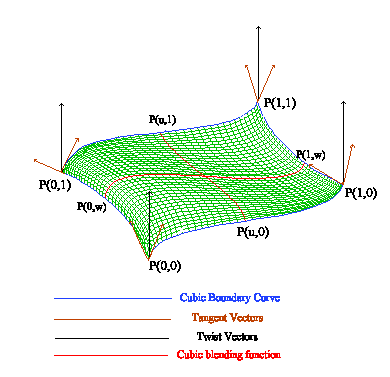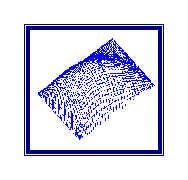|

Generating Surfaces Using Coons Bicubic Patches
The simplest Coons bicubic patch is a rectangular region in a plane.
A Coons bicubic surface patch uses normalized cubic splines for all four boundary curves. Cubic blending functions are used to define the interior of the patch. To generate a single Coons bicubic patch we also need some geometric information. We need to know the four position vectors at the corners, eight tangent vectors, two at each corner and the four twist vectors at the corners.

The patch can be deformed by changing the tangential and the twist vectors (see our computer displays).

Coons Patch & Tangential Deformation

Coons Patch With Twist Deformation
Multiple Coons bicubic patches can be joined along their boundaries provided certain continuity conditions are satisfied to yield more complex surfaces.
These surface patches prove to be fairly flexible. But since they are defined using cubic splines and certain precise non-intuitive mathematical information, they are mainly used when the shapes of objects to be designed are almost pre-determined. Coons patches are used to simulate realistic objects like mountain ranges.

Copyright © 2022 ICICI Centre for Mathematical Sciences
All rights reserved. Send us your suggestions at
|